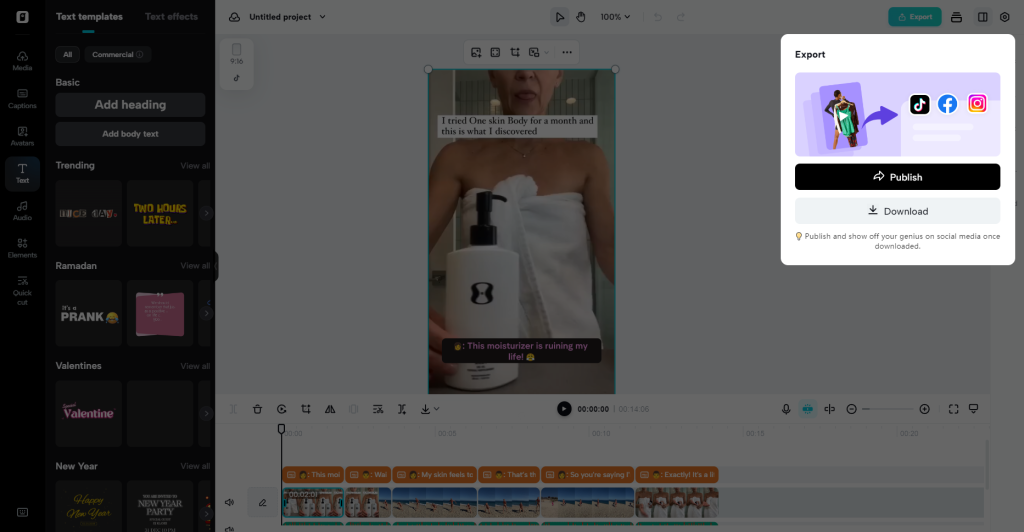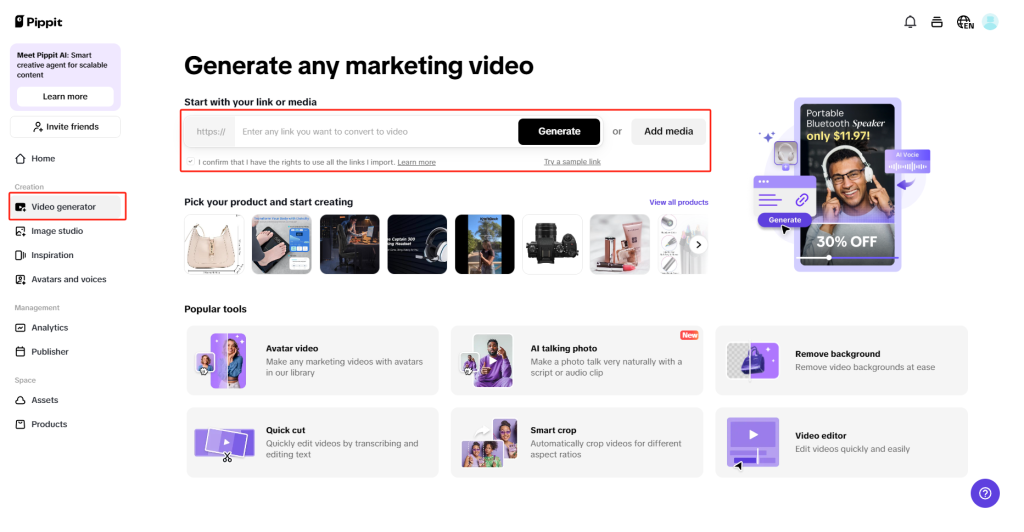

Embracing the Future: The AI Revolution in Video Production by 2025
As we approach 2025, the world of video production stands at a pivotal moment, shaped significantly by the rapid advancement of artificial intelligence (AI). This technological revolution is reshaping how we create, edit, and distribute video content, allowing filmmakers, marketers, and everyday creators unprecedented opportunities.
The Democratization of Video Production
From Hollywood blockbusters to social media snippets, AI is touching every facet of video creation. The introduction of tools like a free AI video generator enables creators—from individuals to small businesses—to produce professional-quality content without hefty budgets or specialized skills. This unprecedented access to advanced technology is democratizing video production and giving rise to a new generation of creatives.
The Future Looks Bright
As we look toward 2025, several promising trends are emerging that promise to redefine the industry landscape. AI-powered editing suites that can dramatically reduce production timelines, alongside innovations like virtual actors capable of performing in various languages, indicate that we are only scratching the surface of what’s possible.
Top AI Trends Shaping Video Production by 2025
1. AI-generated Content: Transforming Text to Video
The emergence of advanced AI capabilities allows creators to transform mere text into full-fledged videos. This innovation encompasses everything from voiceovers to animation. Particularly beneficial for e-learning, marketing, and news reporting, this capability ensures that the demand for rapid video production can be met effectively.
- Text-to-video conversion streamlines content creation.
- AI-generated B-roll footage enhances storytelling based on script context.
- Automated storyboard creation aligns visual elements with narrative flow.
2. Personalized Video Experiences
AI also shines in the realm of personalized content. By adapting videos in real-time to match viewer preferences, AI can significantly enhance engagement.
- Dynamic content adjustment allows for tailored messaging based on viewer data.
- Personalized product demonstrations optimize e-commerce video strategies.
- Adaptive learning videos cater to the specific needs of students.
3. The Integration of AR and VR Technologies
The marriage of AI with augmented reality (AR) and virtual reality (VR) creates immersive experiences that engage audiences in groundbreaking ways. These technologies are revolutionizing how we tell stories and offer new content genres.
- AI-driven virtual environments facilitate profound storytelling experiences.
- Real-time object recognition and overlays can provide informative visuals in AR videos.
- Virtual try-on experiences for fashion and cosmetics allow consumers to visualize products in real time.
4. AI-Enhanced Mobile Videography
Smartphones are becoming powerhouses for video production, with AI features improving both stabilization and audio quality. The enhanced editing capabilities available on mobile devices are transforming how we create content on-the-go.
- Advanced image stabilization produces smoother footage during handheld filming.
- AI-powered noise reduction and enhancement of audio ensure professional-quality sound.
- Automatic scene optimization adjusts settings based on current lighting conditions.
5. The Rise of AI Voice Generators
Recent advancements in AI voice technology mean that realistic voiceovers can now be created across multiple languages—this is a game-changer in content personalization.
- Lifelike voice modulation generates more natural narrations.
- Interactive audio experiences enhance viewer engagement in videos.
- Character-specific voice generation elevates animated content production.
6. Virtual Actors and AI Scriptwriting
AI-driven tools are dramatically reducing the time required for script generation. AI avatars and virtual actors are quickly becoming essential in minimizing localization costs.
- AI-generated dialogue caters to various character archetypes.
- Emotion-driven performances by virtual actors enhance storytelling depth.
- Automated script adaptations can tailor content for different genres and formats.
7. Streamlined Post-Production with AI-Powered Editing
Long gone are the days of tedious editing. AI tools can automate complex processes, allowing editors to focus on more creative aspects of their work.
- Automated scene detection and organization makes the editing workflow more efficient.
- AI-assisted color grading improves the visual quality of the footage.
- Intelligent content-aware filling effortlessly removes unwanted elements from the frame.
8. Enhanced Video Quality
AI-driven tools are advancing video quality to unprecedented heights. Techniques such as upscaling, restoration of old footage, and enhancing audio clarity are revolutionizing archival content.
- AI upscaling enhances low-resolution footage to 4K and 8K quality.
- Automatic colorization breathes new life into black-and-white archival films.
- Noise reduction and clarity improvements refine older videos and make them more watchable.
Creating AI-Generated Videos with Pippit AI
Pippit AI has simplified the video creation process through intuitive, step-by-step guides. This platform has emerged as a favorite among creators aiming to leverage AI for high-quality video production.
Step 1: Upload Product Links or Media
Begin by logging into your Pippit AI account and navigating to the Video generator feature. Registration is free, allowing more users to access its capabilities. You can either upload product images or paste links from e-commerce sites. The Auto Enhance feature will automatically optimize visuals for better clarity, adjusting brightness, contrast, and sharpness.

Step 2: Customize Your Video
With your media uploaded, customize the content to reflect your vision. Quick Edit options allow for basic adjustments, including changing text overlays. For more intricate changes, choose Edit More to manipulate transitions, animations, and playback speed. Additionally, refining the AI-generated script ensures your video aligns with your brand’s voice and style.

Step 3: Export and Save
Once you’re satisfied with your creation, finalize it by exporting to your preferred format. Take the time to review elements for coherence and quality, making sure audio aligns with visuals. Choose settings for resolution, quality, and frame rate before downloading or storing the video.

Conclusion
The integration of AI in video production heralds a transformative era, providing opportunities for creativity, efficiency, and broader access to technology. As we redefine how we produce engaging video content, embracing these trends will empower video creators across the board to produce compelling narratives. Looking ahead, those who adapt to this AI-driven landscape will find themselves at the forefront of the next wave of video production.
In this rapidly evolving arena, the balance between technological innovation and human creativity will be critical. The potential for AI to redefine the production experience offers exciting prospects for anyone passionate about storytelling through video.







